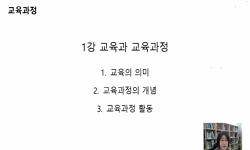Purpose: Two years have passed since a level I trauma center was officially opened in the Gacheon Gil Hospital, South Korea. We analyzed 2014 and 2015 registered patient data from the Korean Trauma Data Base (KTDB) to identify trends in trauma patient...
http://chineseinput.net/에서 pinyin(병음)방식으로 중국어를 변환할 수 있습니다.
변환된 중국어를 복사하여 사용하시면 됩니다.
- 中文 을 입력하시려면 zhongwen을 입력하시고 space를누르시면됩니다.
- 北京 을 입력하시려면 beijing을 입력하시고 space를 누르시면 됩니다.

Characteristics of Korean Trauma Patients: A Single-center Analysis Using the Korea Trauma Database = Characteristics of Korean Trauma Patients: A Single-center Analysis Using the Korea Trauma Database
한글로보기https://www.riss.kr/link?id=A103164607
- 저자
- 발행기관
- 학술지명
- 권호사항
-
발행연도
2016
-
작성언어
Korean
- 주제어
-
등재정보
KCI등재
-
자료형태
학술저널
-
수록면
155-160(6쪽)
- DOI식별코드
- 제공처
- 소장기관
-
0
상세조회 -
0
다운로드
부가정보
다국어 초록 (Multilingual Abstract)
Purpose: Two years have passed since a level I trauma center was officially opened in the Gacheon Gil Hospital, South Korea. We analyzed 2014 and 2015 registered patient data from the Korean Trauma Data Base (KTDB) to identify trends in trauma patient care and factors that influence the quality of trauma care at the Gacheon Gil trauma center. Methods: Data was extracted from the KTDB included patient age, sex, systolic blood pressure at emergency room arrival, revised trauma score, injury severity score, trauma injury severity score, transfusion amount, and the cause of death was analyzed. Results: A total of 3269 trauma patients were admitted to our trauma center in 2014 and 3225 in 2015. Demographics and mechanism of injury were not significantly different between years. The severity of trauma injury was decreased in 2015 although the mortality rate was slightly increased. This requires further analysis. Conclusion: The aim of this study was to determine the general status and trends in trauma incidence and management outcomes for the Incheon area. We noted no significant changes in trauma status from 2014 to 2015. We need to collect and review trauma patient data over a long period in order to elucidate trauma incidence and management trends in the trauma field. Finally, studies using trauma patient data will indicate appropriate quality control factors for trauma care and help to improve the quality of trauma management. [ J Trauma Inj 2016; 29: 155-160 ]
동일학술지(권/호) 다른 논문
-
Rectal Injury Associated with Pelvic Fracture
- 대한외상학회
- ( Jihun Gwak )
- 2016
- KCI등재
-
- 대한외상학회
- ( Yoon Hyun Jung )
- 2016
- KCI등재
-
Blush on Computed Tomography and Transcatheter Arterial Embolization in Pelvic Fracture
- 대한외상학회
- ( Jihun Gwak )
- 2016
- KCI등재
-
- 대한외상학회
- ( Jae-ang Sim )
- 2016
- KCI등재




 ScienceON
ScienceON KISS
KISS







